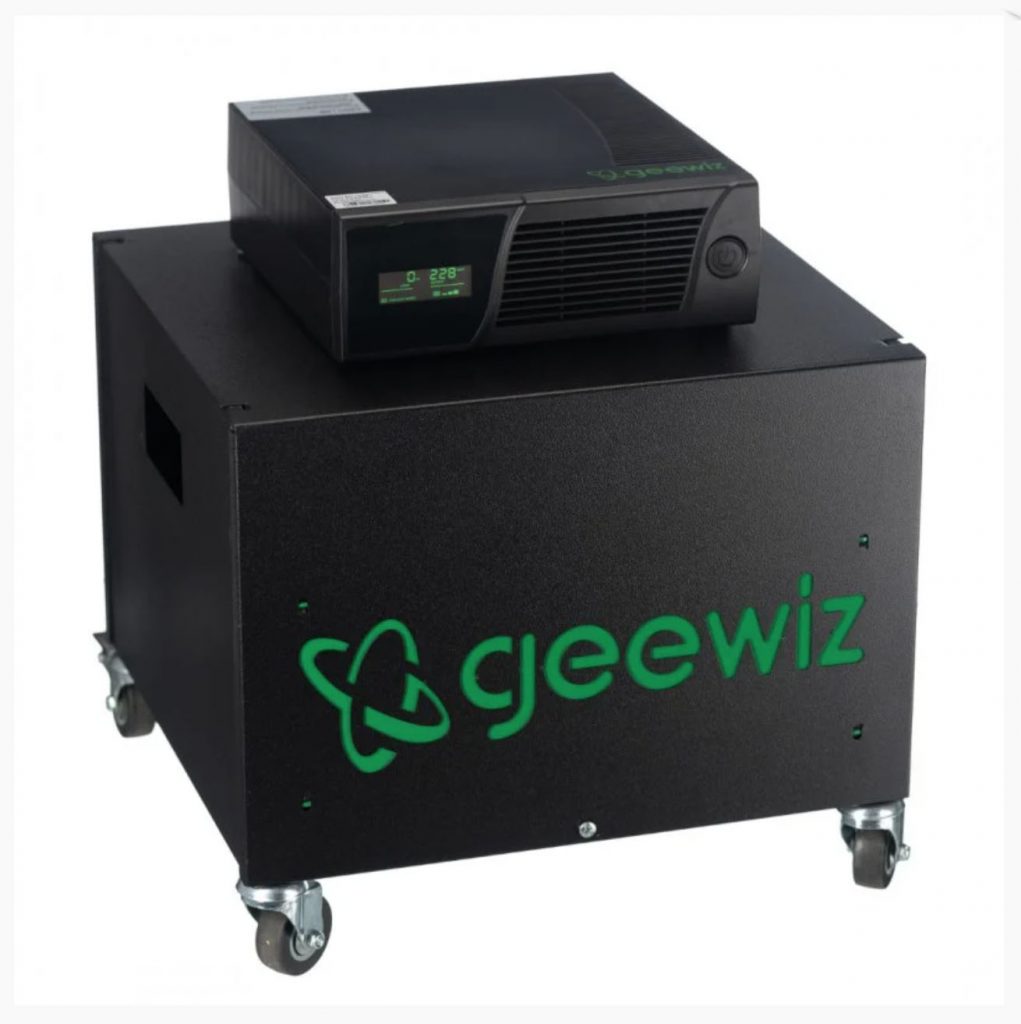Online store Geewiz has a range of load-shedding solutions in the form of solar, uninterrupted power supply (UPS) and inverters with batteries. The company supplied us with its entry-level 1 200VA inverter with a 100Ah battery.
The 720 watt unit can deliver up to four hours of battery life based on a 150W consumption. Geewiz says this would run a television set, lamp, wi-fi router and laptop.
The unit is a modified sine wave inverter, so is not suited to be connected to your distribution board. For those who want to plug a battery into their mains, you would need to look for a pure sine wave solution, which costs more. It will work on a fridge, microwave, medical devices or sensitive electronics.
If you run an Apple iMac desktop, you would need a pure sine wave inverter, although the entry level we tested is suitable for a MacBook Air or Pro.
The company also supplies this information with the battery pack. It’s printed in red bold text that high wattage items such as hair dryers, vacuum cleaners and heaters should not be plugged into it.
The unit is heavy because of the battery, and although Geewiz sells it as a standalone device, for R600 more, you can add a battery cabinet with wheels to move it around.

The unit comes with a Geewiz 1200VA, 720W DC-AC inverter UPS; it has a 20A charger, which you can toggle to 10A; a 100Ah 12V battery; and cabling. Its dimensions are 38cm x 30cm x 42cm. Apart from the charging input, it has one three-pin plug output, which you can connect a multiplug to. There are no USB ports.
If you are working from home, it is an ideal entry-level solution to keep your laptop and wi-fi powered for four and a half hours of stage six load-shedding. We can only predict things will get worse, so it’s best to consider a backup for a minimum of four hours.
The inverter does hum and is suitable for townhouses or places where generators are not allowed because of the noise levels.
For my usage patterns as a writer working from home, I don’t switch on my TV during the day so I did not need it to be powered during load-shedding. I used it for my Macbook Air and used an adaptor to connect my laptop’s two-pin plug. For the evenings I used it on a Samsung Projector that uses 65 watts of power and plugged in a lamp.
In addition to receiving instructions on what not to connect to the inverter, you also get a printout on how to maximise its battery life. It’s an excellent addition for anyone who is new to using an inverter. It is also available as a PDF download on the product listing page on Geewiz.co.za.
It states that the inverter should be plugged in and turned on to keep it constantly at full charge, which is the best state. It says if there is no load-shedding, after a few weeks the acid will start to sulphate on the top of the battery. The solution is to unplug the inverter once every one to two months and let it run down till you hear a beeping sound, then immediately plug it back. This process allows the acid to circulate and increase the life of the battery.
This entry level inverter is best for those working from home who can’t afford to be offline and not be productive. If you’re only plugging in a laptop and router, it will last longer than four hours.
It is recommended for powering your laptop, charging cell phones or small electronics, a wi-fi router and, if you really need it, a TV. Otherwise, for the evenings, it can be used for a TV, small projector, streaming boxes, and a lamp.
Some smaller electronics are better suited to using a power bank; it’s handy to keep a 10 000-20 000mAh charged for load-shedding.
The Geewiz 1200VA inverter with 100Ah battery costs R4 995, plus there is a courier surcharge of R495 if you can’t collect from its Johannesburg branch. We recommend you take the battery cabinet on wheels for an extra R600.